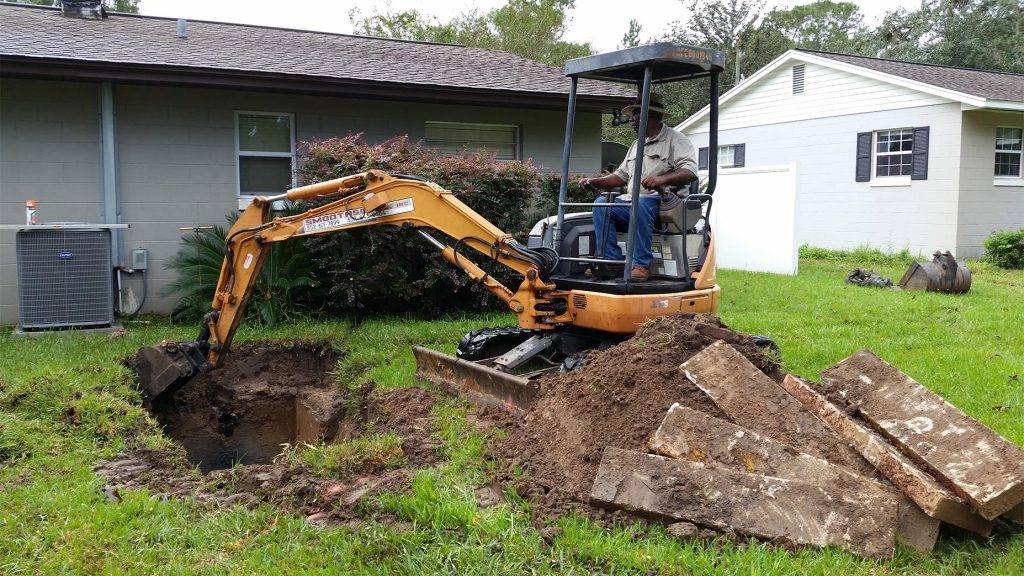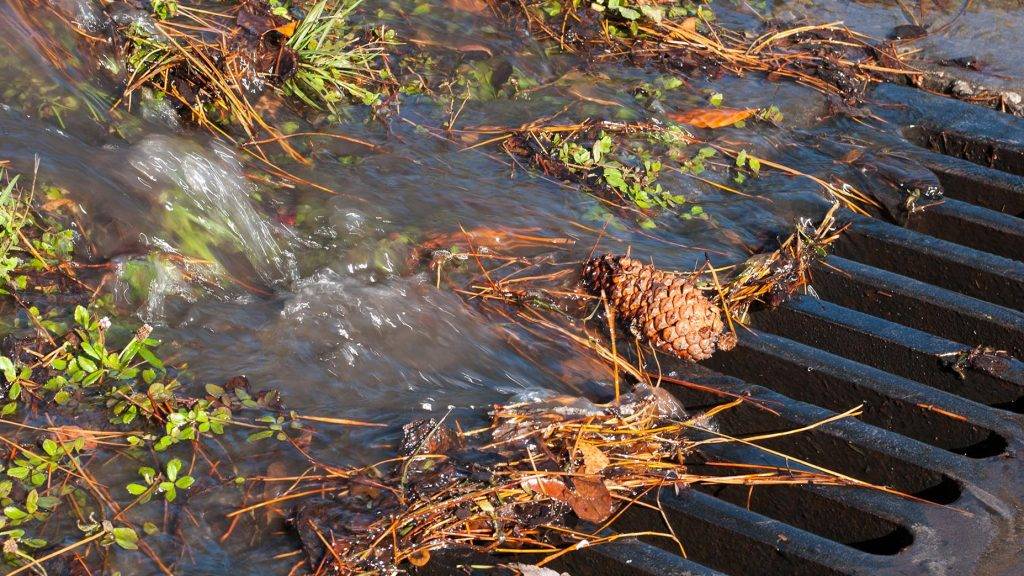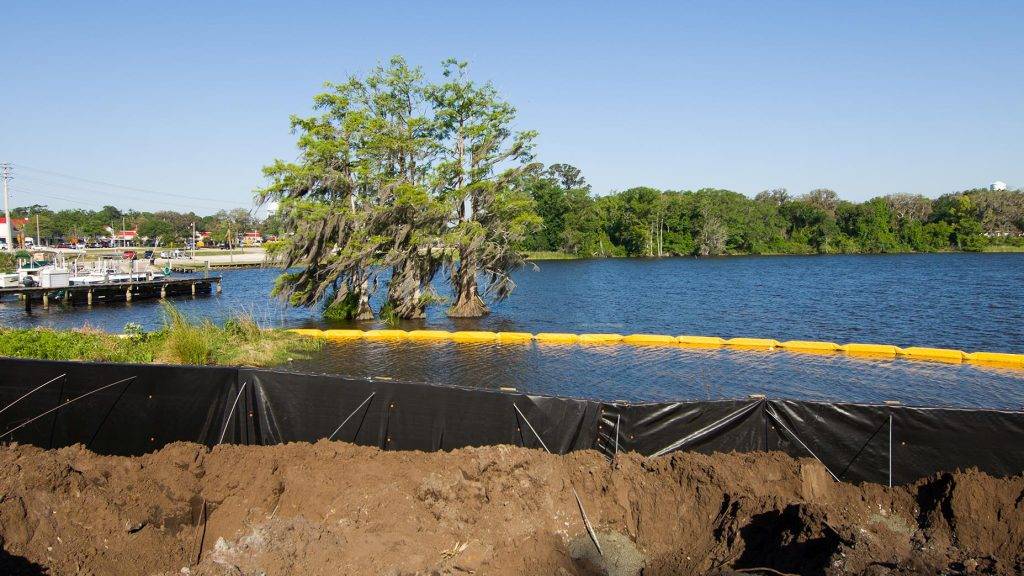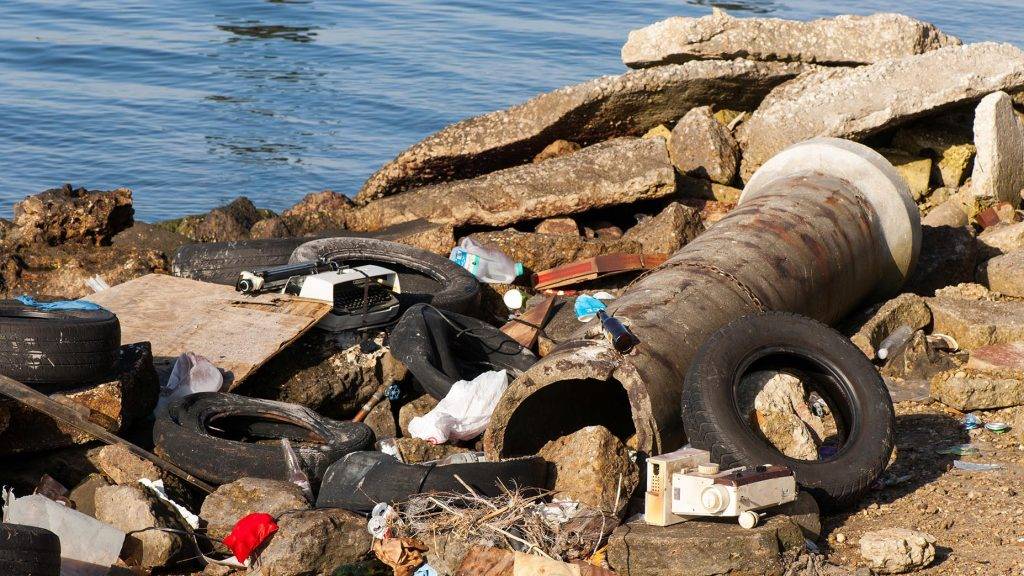Many of people’s activities unintentionally add nitrogen and phosphorus or other pollutants to waterways. Over many decades, urban development, farming, industry and man-made pollutants have been pumped into waterways for disposal. Following is a summary of some of the major causes of water pollution.
Every day wastewater from sinks, dishwashers, clothes washers and toilets flows into sewer pipes to a treatment plant. Oftentimes, this partially treated sewage leaves the treatment plant and is discharged to a waterway.
This wastewater can be treated to remove harmful organisms and substances, and made safe for irrigation and nonpotable (nondrinking) water needs. The use of this reclaimed water is an environmentally responsible alternative to disposing of the treated wastewater in surface waters. Practicing water conservation can also help reduce the amount of water that must be disposed of from our homes and businesses.
In Florida, approximately a third of the population is served by on-site sewage treatment and disposal systems (OSTDS), known as septic tanks. A septic tank system consists of a large, watertight tank that receives wastewater from the home plumbing system. The wastewater flows from the tank into an underground drainfield consisting of a network of perforated pipe or chambers for distributing partially treated water from the septic tank to the soil for final treatment and disposal.
A septic system that is not properly located, designed, installed or maintained can allow liquid wastes to pollute nearby surface waters and groundwater. Septic tank systems can fail when the drainfield does not dispose of sewage as rapidly as it is being added to the system.
The Florida Department of Health Bureau of Onsite Sewage Programs and county environmental health units regulate the use of septic tanks in Florida.
What you can do:
To ensure your system is functioning properly, follow guidelines from the Florida Department of Health, including:
- Standard septic systems do not address nutrients.
- Connect to sewer where possible.
- Consider upgrading to an enhanced septic system.
Stormwater runoff — water that runs off or flows over the ground after a rainstorm — picks up debris, chemicals, soil, yard waste, fertilizer, motor oil and other pollutants, carrying the pollutants into local retention (stormwater) ponds or directly into local waterways through storm drains. This water is not treated in a water treatment plant. Sometimes this water is partially treated through a stormwater pond. Stormwater ponds provide temporary storage of stormwater runoff and capture a variety of pollutants that would otherwise work their way downhill to waterways and wetlands.
In 1982 the Florida Legislature passed legislation requiring treatment of stormwater and reducing stormwater runoff. Since then, all new developments have been required to use best management practices (BMPs), such as retention or detention ponds, detention ponds with filtration, and swales to minimize runoff during construction and to treat stormwater after construction.
The responsibility for permitting stormwater management systems rests with water management districts and, in some cases, the Florida Department of Environmental Protection. After developers complete construction of permitted systems in residential areas, the permit and the legal responsibility for maintaining these systems are typically passed on to a homeowners association.
What you can do:
You may not have waterfront property, but the rain that runs off your roof, lawn and driveway can eventually end up in the nearest waterbody. Not all storm drains lead to a treatment plant; most are direct conduits to a stormwater pond or natural waterway. Lessen harmful impacts from stormwater runoff by doing the following:
- Maintain your stormwater system. Clean and clear inflow/outflow structures, remove nuisance and excess vegetation, repair eroded slopes, and clean up trash and yard waste in your yard and gutters and around storm drains.
- Plant appropriate shoreline vegetation to reduce erosion, absorb nutrients and lower the pond’s water table.
- Avoid the use of pesticides and herbicides, which can harm people, pets, beneficial organisms. Use nontoxic alternatives whenever possible, and pull weeds by hand.
- Avoid overuse of fertilizers.
- Don’t blow yard waste and grass clippings into streets or storm drains.
- Repair automobile leaks.
- Dispose of oils, chemicals and paint properly, not by dumping in your yard or down storm drains.
- Dispose of antifreeze, motor oil and batteries at designated collection centers.
- Pick up and properly dispose of pet waste.
Nitrogen pollution comes from many sources, including from the fertilizers used on lawns and in landscaping. This nitrate-rich water makes its way to surface waters as runoff during rainfall or over-irrigation, or it may drain slowly from the soil over time.
Algal blooms in water bodies can be attributed to nitrogen pollution. Using fertilizers only when lawns show a particular nutrient deficiency and using chemicals responsibly can benefit our waterways.
What you can do:
Florida-friendly lawns require only moderate amounts of supplemental fertilizer once they are established.
- Apply fertilizers sparingly, if at all, and avoid overuse near the water’s edge.
- Know application factors, such as grass species and soil type and permeability. Know exactly how much area (square feet) of your lawn the bag of fertilizer is intended to cover.
- Follow the manufacturer’s directions on the bag.
- Choose fertilizers with low or no phosphates. Florida soil is naturally high in phosphorus, so a “no phosphate” fertilizer is fine for most mature lawns. Apply a phosphate fertilizer only if lacking. For specifics to your area, contact the local County Cooperative Extension Service.
- Choose slow-release fertilizers. The best fertilizers for healthy landscapes and the environment are those that contain a high percentage of slow-release forms of nitrogen. Slow-release products stay in the soil to supply nutrients to plants on a gradual basis. The product label will say organic, slow-release or controlled release nitrogen, sulfur-coated, IBDU (15N-isobutylidene divrea), or resin-coated.
- Use the type of fertilizer necessary to address the specific nutrient deficiency symptoms.
- Fertilize only during the growing season. Allow a month between autumn application and the first freezing temperatures, which will make new growth less vulnerable to frost.
Use chemicals responsibly with these tips:
- Use pesticides, herbicides and fungicides only when needed.
- Follow the directions on the product’s label.
- Apply only on areas needing treatment.
- Consider organic or nontoxic products.
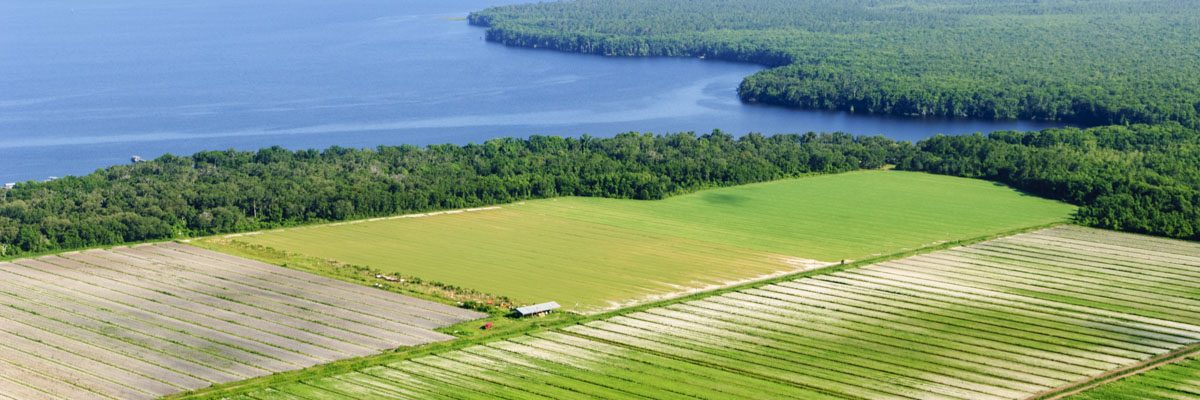
For generations, thousands of acres of farmland have been cultivated throughout Florida. In many cases, nutrient-rich water from farm fields has drained or been pumped into natural waterbodies without treatment, impacting water quality. This overabundance of nutrients encourages algal blooms that deplete oxygen from the water and block sunlight from reaching underwater vegetation, critical to fish and wildlife habitats.
The St. Johns River Water Management District has worked with agricultural interests for more than two decades to reduce the amount of excess nutrients being discharged into regional waterways and to restore the health of the those waterways. For example, the District’s work in the tri-county agricultural area of Putnam, St. Johns and Flagler counties has involved the development of controlled-release fertilizers and new best management practices to reduce phosphorus and nitrogen loading to the St. Johns River. At the river’s headwaters in Brevard and Indian River counties, the District has worked with farmers to treat water from citrus growing areas and to make that water available for freeze protection and irrigation as needed.
Sediments from soil at construction sites can wash into waterways, which can create problems for aquatic life. Turbidity — cloudy water caused by suspended matter — reduces the amount of sunlight able to reach submersed plants. Siltation — the settling out of the sand, silt and other matter suspended in the water onto the bottom of the waterbody — destroys submersed grass beds and other bottom-dwelling plants and animals, in addition to impacting drainage and navigation.
Since 1982, all new developments have been required to use best management practices to minimize erosion during construction and may include requiring stormwater treatment facilities.
What you can do:
To reduce sediment when landscaping, remodeling, building new structures or doing any earth moving, you can do the following:
- Cover small mounds of dirt with a tarp so wind and rain don’t carry the sediment into the nearby waterway. Surround larger piles of dirt with staked hay bales or filter cloth fences to minimize erosion.
- Do not alter the size of your neighborhood stormwater swale or pond. The stormwater system is designed and constructed to an appropriate size. Any reduction in treatment volume will interfere with the pond’s ability to hold stormwater runoff. Filling stormwater ponds, swales and retention systems can cause flooding and endanger waterways.
- Consult the stipulations of your neighborhood’s permit before any construction. Changing the elevation of large pieces of property can have drastic impacts on where storm water flows.
Pollution of surface waters is generally categorized as point source or nonpoint source. With point source pollution, the cause of the problem can be traced to a single source — for example, a pipe or culvert discharging wastewater from a factory. Some industrial and sewage treatment plants connect directly to a waterbody and create point source pollution, but not all pipes create point source pollution.
In the past, pollution from industrial and domestic point sources was common. However, stronger regulations, newer technologies and more advanced treatment of wastes have reduced pollution. These sources are regulated by federal, state and local laws. In Florida, the Florida Department of Environmental Protection and the state’s water management districts work to prevent many kinds of water pollution, restore natural systems already damaged by contaminants, and educate the public about preventing water pollution.


